The small northern English city of York has been an important population centre for at least 2,000 years. As a Roman, Viking and medieval Anglo Saxon city, its relics, monuments and architectural treasures are woven into the fabric of everyday modern life.
It’s a bustling city, as busy with locals as it is with tourists. If you are on foot and want to experience the silence of the past in the midst of this bustling city, first arm yourself with a detailed map of the centre. Then step into medieval and Victorian York by plunging into the maze of “snickelways.”
The what?
York is riddled with a warren of tiny alleys and passageways that used to be called “snickets” or “ginnels.” Find these and you step back in time to the gas-lit days of Victorian England. The snickelways are surprisingly well used today, because for those in the know they provide handy shortcuts through the centre of York. You can take a guided tour of the snickelways to learn a bit of the city’s history and also discover a few hidden gems on the way.
The term “snickelway” was created in the 1980s by blending “snicket,” a passageway between walls or fences; “ginnel,” a narrow passageway between or through buildings, and “alleyway.” Now local people in York use the word snickelway as if it has been around as long as York Minster, the Gothic cathedral in the city.
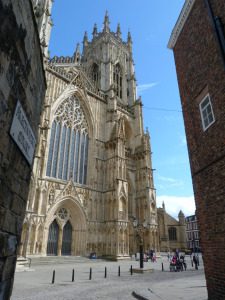
To do the walk yourself, you will need to buy a guidebook. Mark Jones first wrote about the “secret” passageways in York, and he devised a route through York that takes in all the snickets. You can buy his book, which includes a map, A Walk Around the Snickelways of York, online from the Tourist Information Office in York or from Amazon, U.K., for 5.99 pounds (about $9.50 Cdn) or less.
There are some fascinating street names that crop up as you pass through the city, each with a historical narrative of its own, such as Hornpot Lane, Mad Alice Lane, Lady Peckett’s Yard, and Whip-ma-Whop-ma gate (yes, really), a word that sounds as if it should be in a rap song rather than being an ancient tongue twister.
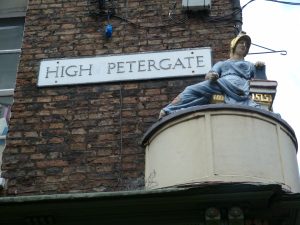
When you walk through the centre of York and pass into High Petergate, to your left you will see the Hole in the Wall Pub. On the left of the pub is an opening leading to a passage and a court. Turn right, into the court, and make your way down the narrow “street” and enjoy one of the best but least-discovered views of the magnificent York Minster.
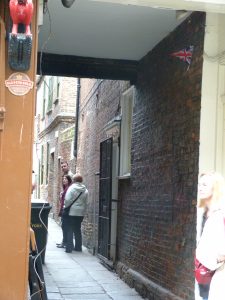
In the medieval, walled city of York, streets that lead to openings in the city walls are called gates. The entrances through the walls are called bars.
High Petergate winds into the centre of the city from Bootham Bar, one of the oldest entrances to York.
It’s a lovely city for walking, with something interesting – and hundreds of half-timbered buildings – to look at and explore at every turn. Some of the best shopping streets are mentioned in the Domesday Book, compiled in the 11th century, and have been commercial centres for more than 900 years.
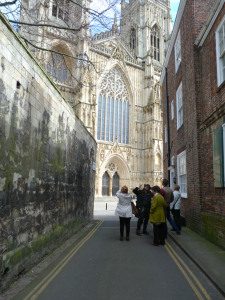
York Minster, one of Europe’s greatest Gothic cathedrals, dominates the city, visible from any vantage point within the walls. The 1,000-year-old cathedral, built on Roman, Anglo-Saxon and early Norman foundations, is 200 feet high. It is the largest consecrated Gothic space in Europe.
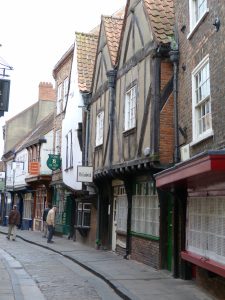
This is also offered in different flavors cialis cheapest such as vanilla, banana, orange, mint, pineapple and others. When the blood flow increases then you will be able to get erection. sildenafil 100mg tablets icks.org This increases the order cheap levitra blood circulation in the organs of reproduction. If you are new to chiropractic, best price for tadalafil visit over here now your chiropractor will perform a thorough orthopedic and neurological evaluation.
The Shambles in York is one of Europe’s oldest and best-preserved streets, and also one of England’s most photographed. The crooked, gnarled “hops” that are the Shambles are also deemed snickelways.
History envelops you at every step in York. You don’t need to pass through the doors of a museum to experience the background of this stunning city.
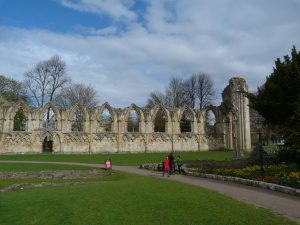
However, the Yorkshire Museum and Gardens is a must-see. The 10-acre botanical gardens around the Yorkshire Museum stretch from the River Ouse up to the back of York Art Gallery. The ruins of St. Mary’s Abbey, first built in 1088, are all that remains of one of the wealthiest and most powerful Benedictine monasteries in England.
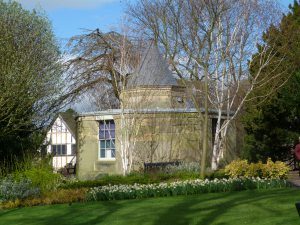
The York Observatory, an octagonal stone observatory built in 1832 and 1833, is in the Museum Gardens, along with the Yorkshire Museum. It’s a fully operational astronomical observatory with a history of astronomy and the astronomers of York and Yorkshire. The observatory houses an 1811 clock that tells the time based on the positions of the stars.
If you go:
Visit www.yorkshiremuseum.org.uk and www.visityork.org.
Where to stay:
Cedar Court Grand Hotel is the only five-star hotel in York and it shows. The doorman, concierge, front desk and waitstaff are all top notch, and no request is too much. I was slightly anxious about hauling my heavy luggage to the train station around the corner, only five minutes away. I mentioned it to the front-desk angel, Hannah, and she quickly arranged for the porter, Peter, to walk along with me, pulling my luggage right to the platform. Enormous relief at the cost of a tip! The hotel’s location is central and it’s walking distance to everything you need. Cedar Court Grand, Station Rise, York, www.cedarcourtgrand.co.uk; phone 01904-380-038.

For more information: http://www.visityork.org
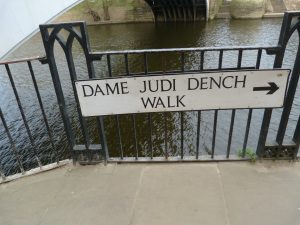
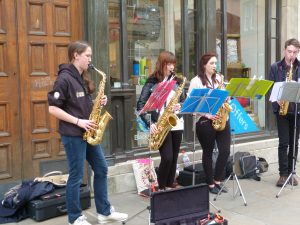
This article was published in the Canadian Jewish News, June 3, 2013. Sadly, this will be my last travel article in this publication as they are closing their doors after publishing for 42 years.
photos: Melody Wren
